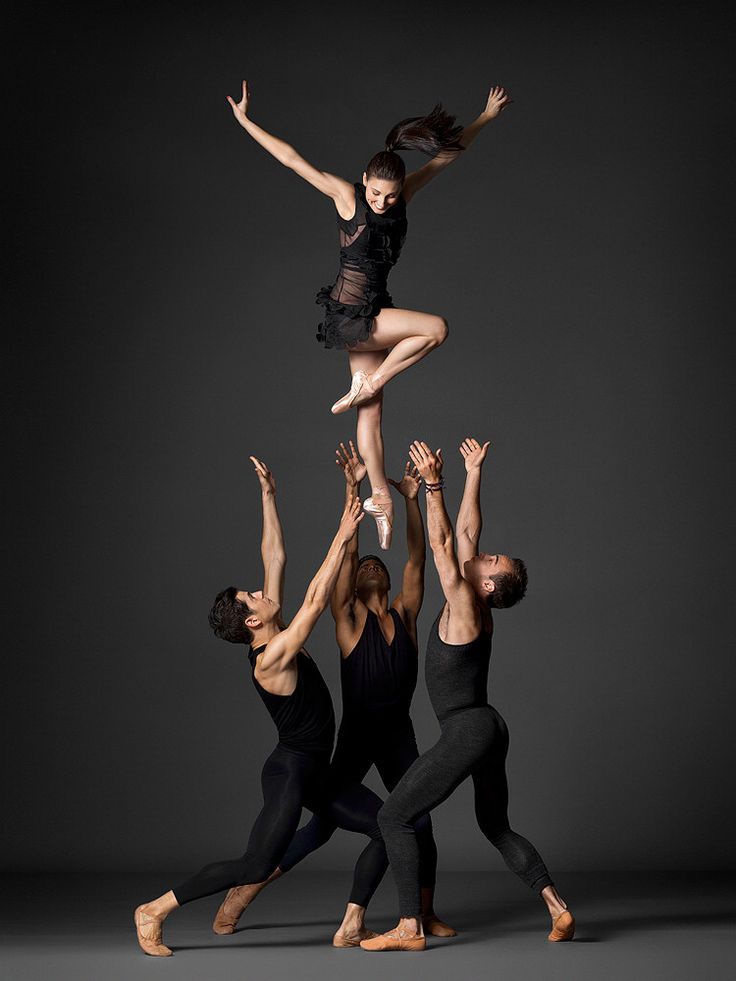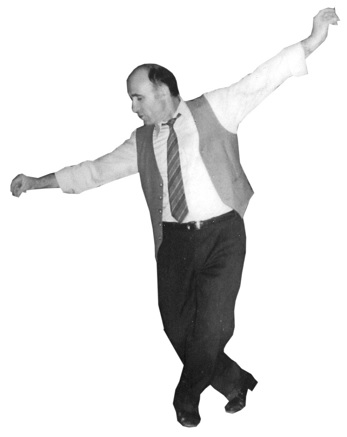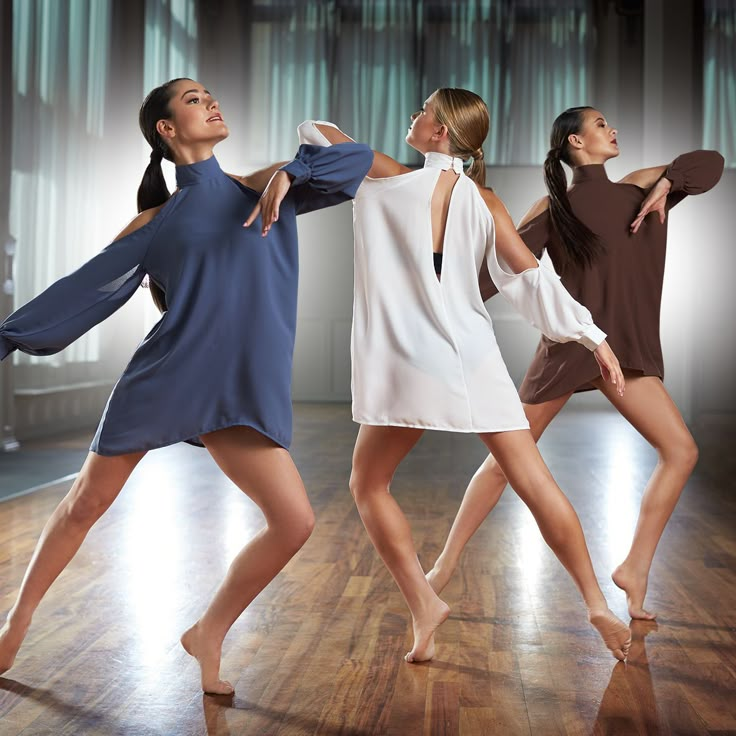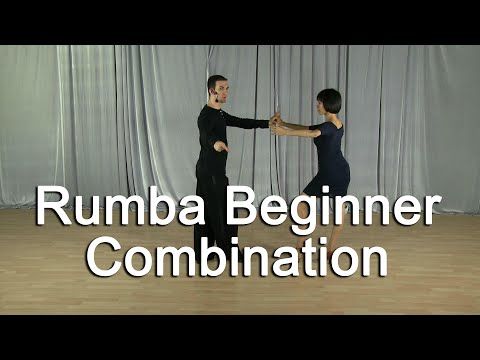How to dance contemporary
Contemporary Dance for Beginners: Dance Tips & Tricks
You’ve got a playlist packed with songs that fill you with feeling...
You’ve watched a million Contemporary dance performances on YouTube...
You’ve dreamed about expressing yourself to music and telling stories through movement...
But, you don’t know how to start learning Contemporary dance as a total beginner.
Don’t worry – we’re here to help!
Follow this guide to kickstart your Contemporary dance journey with all the right knowledge.
What is Contemporary Dance?Contemporary dance is all about self-expression, storytelling, and freedom.
It pulls from traditional dance styles like Ballet & Jazz, but breaks away from the strict techniques and movements that make those styles so recognizable.
When watching a Contemporary routine (or phrase), you’ll catch many of the moves executed in more traditional styles, in addition to acrobatics, martial arts, movements pulled from yoga, and plenty of experimental movements that reflect the feelings of the dancer.
Wondering if Contemporary dance is for you?
If you’re looking for a style that allows you to connect with yourself physically and artistically, you’ve come to the right place!
As you adopt the mindset of a Contemporary dancer, you’ll learn how to communicate your emotions by moving every inch of your body with nuance and intention.
You’ll also improve your ability to create clean lines and aesthetically pleasing shapes as you dance.
And if you’re more familiar with other styles like Hip Hop, Popping, or House, adding Contemporary to your repertoire will strengthen your musicality skills.
You’ll learn how to think outside of the box, create pictures you’ve never tried before, and engage muscles you never knew you had.
All that sound good to you?
Start learning Contemporary dance at home with STEEZY’s “Intro to Contemporary” program for beginners!
1.
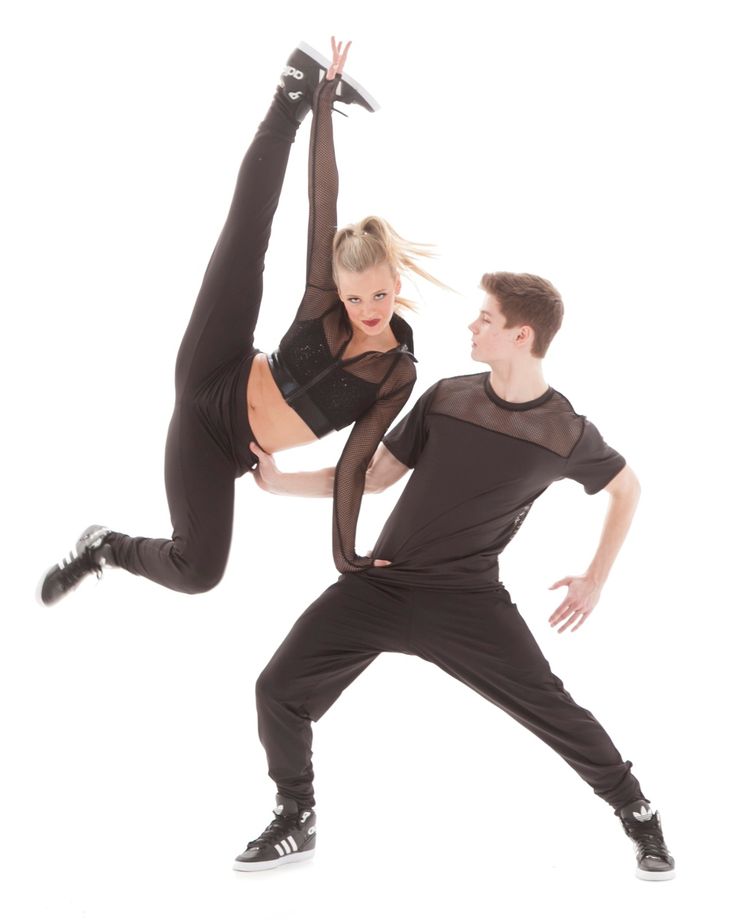 What to wear
What to wearSince Contemporary dance requires a wide range of motion, wear clothes that won’t restrict your movement.
Loose tops, pants, or shorts that are breezy enough to sweat in will work best.
You can dance in bare feet to feel fully connected to the floor, but wear socks if you intend to dance on rougher carpeted surfaces or do a lot of gliding around on the floor.
2. How to prep your dance space
If you’re taking a Contemporary dance class at home, clear 6ft by 6ft of space to dance in and get rid of any sharp edges nearby.
This will allow you to jump, turn, and move without bumping a shin on that pesky coffee table or tripping over an awkward rug.
3. How to prep your body
In order to move with both fluidity and power, Contemporary dancers need to develop a strong core and stable lower body.
In addition to taking your regular dance classes, find 10-15 minutes each day to strengthen your back, abs, and legs.
Holding planks, doing crunches, and balancing on one foot for as long as you can (bonus if you stand on the balls of your feet), will help you get stronger!
You can also spend 10-15 minutes doing gentle yoga routines and stretching exercises to increase your flexibility and range of motion.
Lastly, on class days, don’t forget to warm your body up before dancing!
If your instructor does not include a warmup in their class, take 5-10 minutes to do light cardio and stretching beforehand.
Your first Contemporary classes should thoroughly cover basic techniques, encourage exploration, and help you start building your artistic foundation.
Look for classes that not only teach common moves like Chassés and Ball Changes, but also explain different ways to execute those moves to create different visual effects.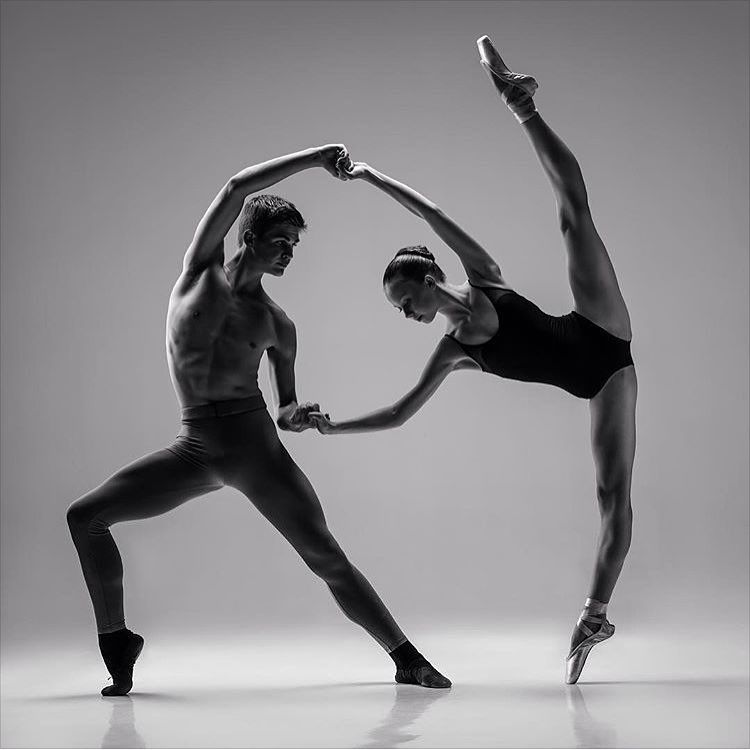
The same move can evoke a totally different emotion when it’s executed crazy quickly versus painfullyyyy sloowwwwlyyyy. (More on that later!)
If possible, chat with your potential instructors before signing up for their class, and ask about how they teach.
Skilled Contemporary instructors will help you explore how your body moves specifically, and push you to move in unexpected ways.
Expect the class to feel more interactive than a typical dance class where you’re quietly copying the instructor.
You might be asked a lot of questions to help you think through your intentions, and spend some time freestyling or improvising.
This is why we included an open-ended exercise on each day of STEEZY’s “Intro to Contemporary” program – the class experience should be immersive and personal, just like your actual dancing.
1. Build body awareness
Before you can start learning to dance with emotional intensity and grace, you have to understand how your body moves and build up the connection between your brain and muscles.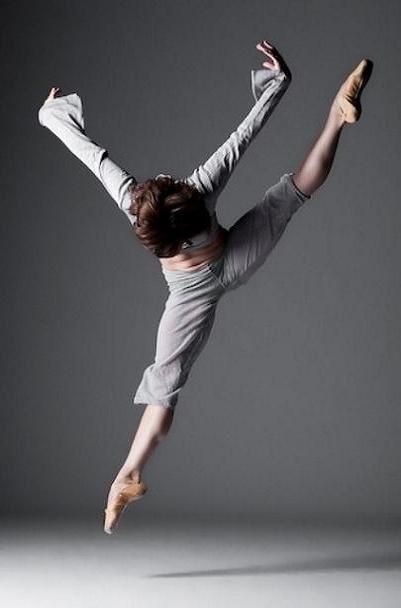
In addition to improving your flexibility, you can use stretch exercises to get in tune with your body.
For example, try slowly lowering your chest down to the floor and back up, moving one vertebrae at a time, to explore what it feels like to activate each back muscle.
For a more creative exercise, follow along with this body awareness video, where you’ll explore moving points on your body along an imaginary grid.
As you do these exercises, focus on only moving one body part at a time, while keeping the rest of your body completely still –– this will make it easier to build muscle memory!
2. Understand eye contact & chin lines
Contemporary dancers don’t just tell stories with their bodies –– they make full use of their faces too!
The direction in which you focus your eyes and chin as you dance will add emotional context to each move.
Look at the images below, and ask yourself, “what does this expression tell me?”
Notice how her expression goes from arrogant to flirtatious, with just subtle changes in her chin angle and eyes?
Practice different angles in the mirror yourself, and make use of those expressions when you dance.
3. Explore different movement qualities
There are several different schools of thought when it comes to defining how Contemporary dancers can move.
In STEEZY Studio’s “Intro to Contemporary” program, we use Laban effort qualities, because they’re straightforward and easy for beginners to understand.
Here’s a quick rundown of the Laban effort qualities:
Flow: Whether you move with a sense of freedom or resistance.
Time: Whether you move suddenly or slowly.
Weight: Whether your movements look heavy or light.
Space: Whether you move directly or indirectly from one place to another.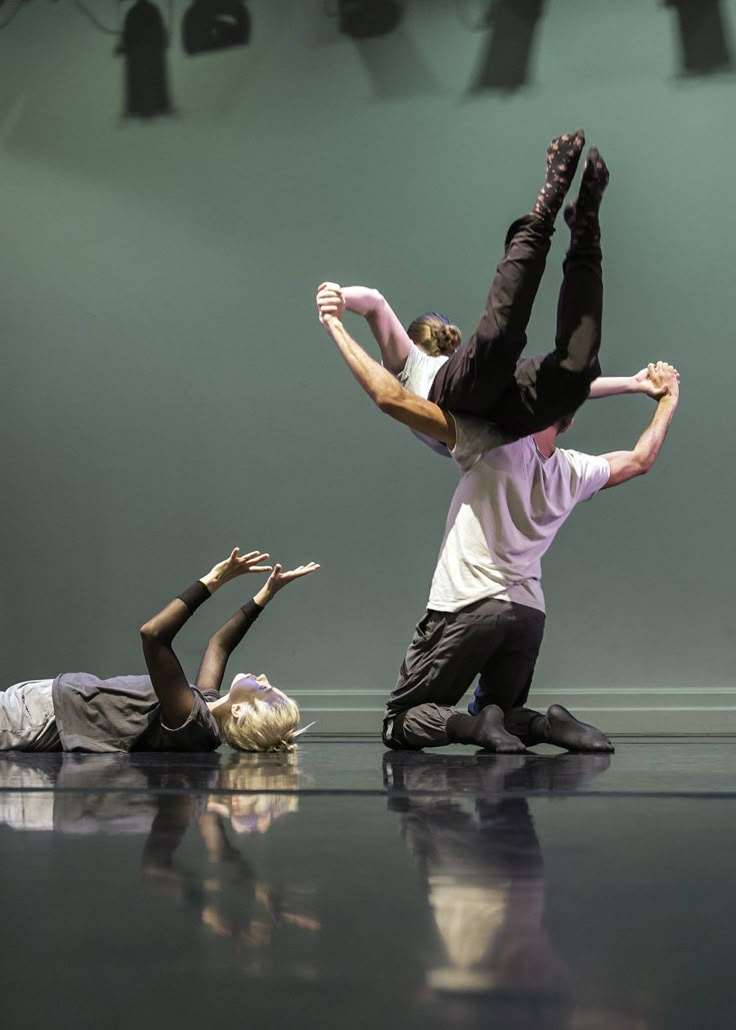
Mastering each quality of movement will expand your toolbelt as a Contemporary dancer.
4. Practice safe movements
You know how certain movements look/feel super complicated at first? (Lookin’ at you fancy floorwork)
You can avoid injuries and discomfort by carefully watching the pathways your instructor takes to get from one position to the next.
When moving to the floor, use your hands to help the rest of your body arrive.
When rolling on the ground, use the softest (🍑) parts of your body as your main point of contact, rather than your joints.
When jumping, land on the balls of your feet rather than flat-footed, so your body can absorb the shock of hitting the ground.
At any time, if something feels painful to execute, ask your instructor for safety tips or find an alternative move altogether.
5. Familiarize yourself with Ballet, Jazz, and other foundations
Since Contemporary draws from other styles, it won’t hurt to check out beginner Ballet classes or beginner Jazz dance classes as a supplement to your Contemporary training.
By learning basic moves from other styles, you’ll also understand more about how the Contemporary versions of those moves can differ.
A few essential moves that carry from style to style?
Ball ChangesPivot TurnsChassésPas de Bourrées3. Journal & improvise to hone your craft
When you perform a dance, it helps to recall a powerful memory that fits the choreography.
So, take the time to journal regularly, and put your own powerful experiences to paper, making them easier to recall.
If you’ve never journaled before, try looking at an emotions wheel, selecting a feeling, and writing about a time you experienced it yourself.
As you write, don’t spare any details. Think of what you wore, how the room/space smelled, how your body felt… everything.
All of that color and context will help you later!
You can also try putting on a song that gets you in your feels, and imagining a fantasy situation that fits the music.
Then, improvise a dance where you’re the main character in that fantasy.
“Improv is a great way to explore how your body moves outside of structure, break habits, and discover new things.” – Karen Chuang, STEEZY Contemporary Instructor
--
We hope this article helped you feel comfortable and confident as you start your Contemporary dance journey!
Remember, your body already has an existing vocabulary of movements whether you’re trained in dance or not.
You know what it feels like to hug, punch, curl into a ball, reach for the top cabinet, collapse on the floor…
And Contemporary dance is just an exaggeration of those familiar movements set to music!
Everything you need already exists within you. Now, all you have to do is start.
Ready to get moving?
Sign up for a free trial of STEEZY Studio and begin our “Intro to Contemporary” program for FREE.
Here’s what you’ll learn:
What is Contemporary Dance? Guide to Contemporary Dance
Contemporary is an important genre of dance performed in societies around the world, celebrated by people both young and old. Developed during the 20th century, contemporary dance involves incorporating aspects of movement from several other genres such as jazz, modern and ballet. While contemporary is a popular type of dance worldwide, it is most common amongst the U.S and European countries.
Key features of contemporary danceUnlike traditional forms of dance, contemporary is considered to be somewhat unbound by much rigidity and rules. The dancers of this genre have the ability to transform a performance based on their own interpretations. This is achieved through honing in on certain techniques, such as focusing on strong ballet-influenced leg movements, fall and recovery, floor work and further improvisational elements. More frequently than not, contemporary dance is performed barefoot to allow for more fluidity in movement and connection to the dance surface.
One of the most important aspects of contemporary dance is the element of improvisation. While some forms of dance such as ballet can be quite rigid and structured, contemporary dance relies on fluidity and improvisational movement to evoke a range of feelings in the viewer. It also offers the dancer ultimate creative freedom to perform an emotive piece that identifies with them.
Modern-day contemporary dance is incredibly interpretive and has many applications. While traditional dance performances are still popular, contemporary dance has often been used in art, theatre, music videos, movies and more. The versatility of the genre allows the dancer to use the influence of a storyline and music to form characters and entire theatrical performances that stray away from the more traditional methods of storytelling.
When did contemporary dance start and who created it?While we can’t say that contemporary dance was started by any particular individual, there were several key pioneers to this movement. As previously mentioned, modern dance truly took off during the 20th century. Previously, theatrical dance performances were mostly limited to ballet, which was popular throughout Europe and the US at the time. This slowly began to change, with renowned dancers of the time beginning to move away from the methods of traditional ballet.
As previously mentioned, modern dance truly took off during the 20th century. Previously, theatrical dance performances were mostly limited to ballet, which was popular throughout Europe and the US at the time. This slowly began to change, with renowned dancers of the time beginning to move away from the methods of traditional ballet.
Undoubtedly the most prolific contributor, Merce Cunningham is an American choreographer and dancer who was at the very forefront of American modern dance for over half a century during the 1900s.
His early choreography pushed the boundaries of modern dance and attempted to bridge the gap between music and dance. Over the years, his technique developed to be referred to as the Cunningham Technique, which was specifically used to train dancers for his company. This refined technique brought together several key elements of contemporary dance, such as torso and legwork coordination, spatial awareness, rhythmic accuracy and erratic changes in speed and direction.
Other well known names in contemporary dance include Isadora Duncan, Jose Limon, Ruth St. Denis and Alvin Ailey.
Can you teach yourself contemporary dance?If you’re looking to learn contemporary dance at home, there is a huge amount of online content to help, including walkthroughs, tutorials and video guides.
However, in order to learn proper form and technique, you may want to join a reputable local dance class or dance studio that teaches contemporary dance. That way you can be sure you are receiving proper training and feedback on your dancing from a professional. Having a trained instructor will also help open you to other opportunities depending on your ability, such as qualifications, certifications and competition and performance opportunities.
Whether you are learning contemporary dance at home or receiving more formal training it is important that you warm up properly and have the right equipment.
Harlequin Floors offer professional performance and dance floors perfect for practising contemporary dance, whether you are in the studio or at home.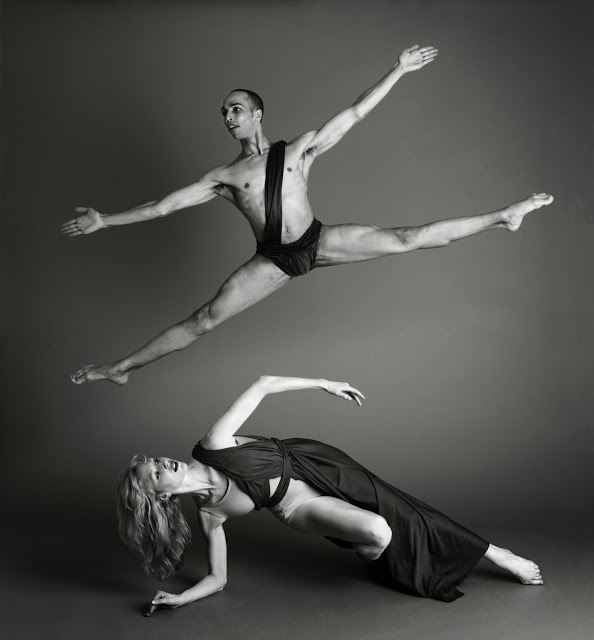 Browse through our range of sprung floors and vinyl floors for more information on our permanent and semi-permanent installations. Alternatively, if you would like to practice on the go, we offer home practice products including everything from dance practice mats to portable ballet barres.
Browse through our range of sprung floors and vinyl floors for more information on our permanent and semi-permanent installations. Alternatively, if you would like to practice on the go, we offer home practice products including everything from dance practice mats to portable ballet barres.
How to learn to dance contemporary - One Life Lviv
Contemporary has become a completely new and significant milestone in choreography. Being a symbiosis of several dance directions and techniques at once, the dance has turned into a real art that has attracted a huge army of fans.
Served contemporary, like a theatrical performance. The embodiment of the powerful energy of dancers in movements that express thoughts, emotions and feelings that are hidden deep inside.
If you imagine yourself as a bird soaring in the sky, and your hands moving smoothly to the sound of the winds, then these will be the sensations that you experience in the dance. Such a state is comparable to the harmony and lightness of the body and the absolute peace of the human soul.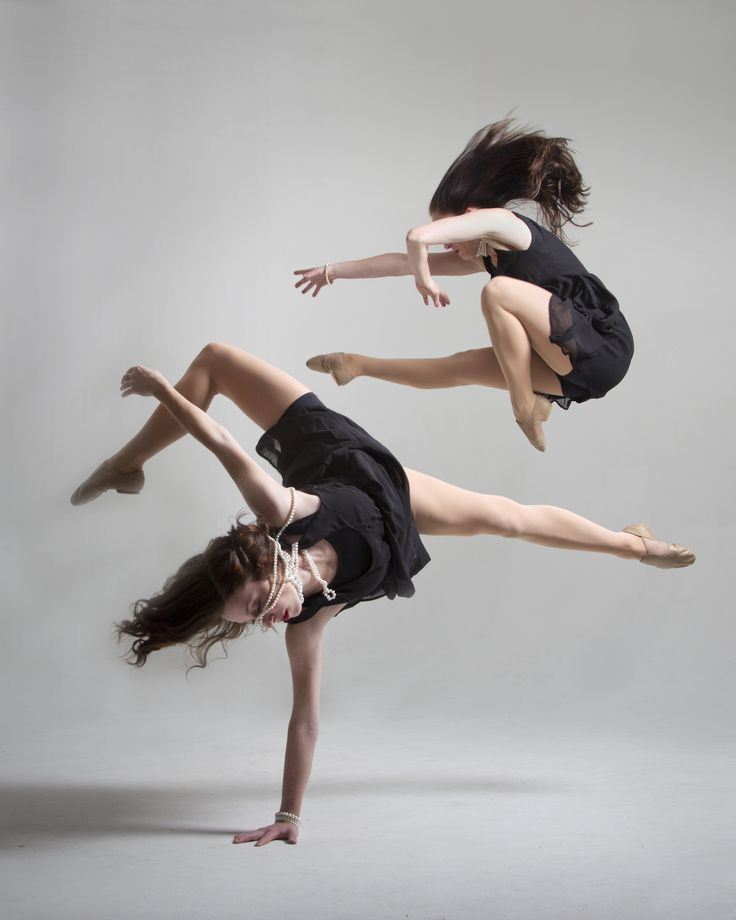 Having learned to dance this dance, a person seems to start flying, without feeling the surroundings.
Having learned to dance this dance, a person seems to start flying, without feeling the surroundings.
What is the place of contemporary dance in Lviv? In all the variety of styles of choreography - contemporary is important, because it is they who can reveal such a large list of emotions and experiences.
Be aware of your body and you will dance contempo
Starting to learn the movements of contempo, pay attention to awareness of your own body. This is necessary for a thorough understanding of the natural principles of movement, for mastering the methods of proper breathing and maintaining balance.
The body is an extremely sensitive instrument that requires a certain amount of tuning. After its implementation, sensations of all the advantages of contemporary come. The dance is distinguished by its individual language and allows you to say your own "I" without resorting to words and using only movements.
Contempo is called a ballet performance without certain canons, since ballet is distinguished by harmony, and contemporary - the rejection of any symmetry.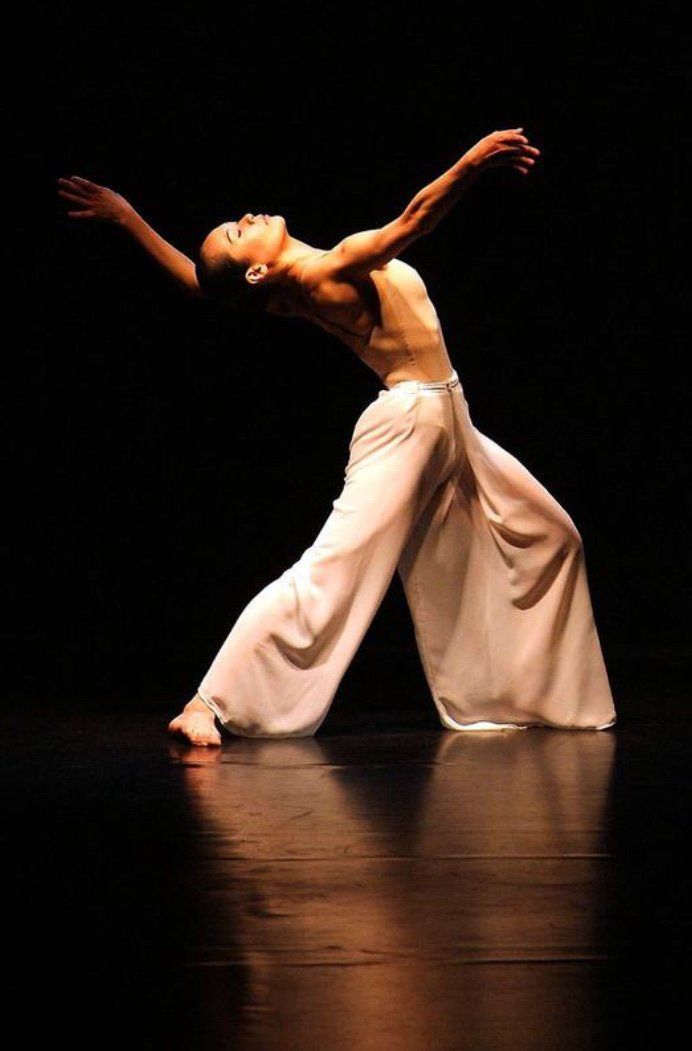 There are such varieties of modern dance direction: vertical, parterre (on the floor) and in pairs. In it, breathing is important, providing the main assistance in movements.
There are such varieties of modern dance direction: vertical, parterre (on the floor) and in pairs. In it, breathing is important, providing the main assistance in movements.
Practitioners from the East gave training methods for balance and transition of the body to different positions. Contempo is oriented "inside", which allows you to fully express your own feelings, creating entire theatrical performances.
Dance lessons in Lviv in the style of contemporary help to fully feel your body and learn how to control it in the direction you need to dance and perform all those forms, figures and elements that are important for contemporary dance.
Learn to dance contemporary: getting to know the world, start with yourself
Our dance classes are taught by experienced choreographers who help everyone who wants to master the methods of contemporary. They, along with the coordination of the dancer's body, pay attention to his consciousness, since these two concepts form the basis of the dance.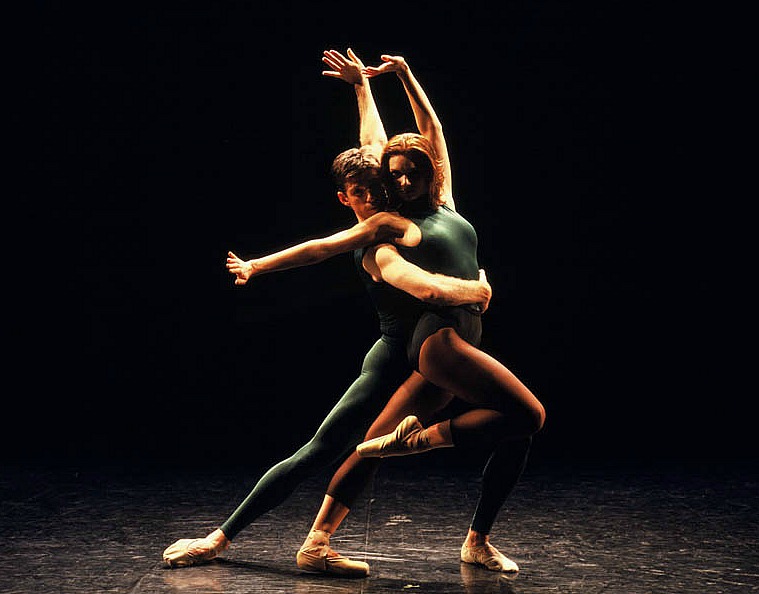
Enthusiastic people come to study with us, distinguished by diligence and openness to new things.
Learning to dance contemporary: an art accessible to everyone
Watching dancers performing contemporary sometimes frightens a person who thinks that he cannot master all these tricks. There is no need for doubts, since they also began development, having no idea about the new current.
With time comes the necessary experience. The main thing is that the beginner should have attentiveness, enthusiasm, the desire to improve and work on himself. There will be no easy way - no one hides. However, as the feedback from the students shows, all the work will bring the desired result.
Learning how to dance contempo for guys and boys is not just a tribute to a fashionable dance trend. This is a manifestation of fortitude, as well as endurance. They simply go beyond the knowledge of people and overcome the laws of attraction. The experience gained gives confidence in one's own strengths.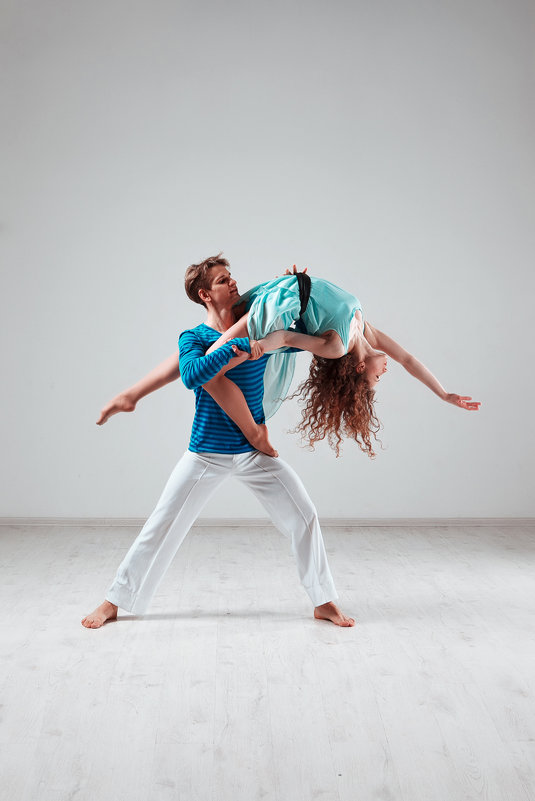
Contempo training is especially useful for girls and girls, as it guarantees a better knowledge of oneself and one's desires, the expression of sensuality. The desire to learn and master contempo does not create obstacles for dancers of any age and gender.
The basic principles of contemp lie in several factors:
- The desire to master contemporary.
- In the control of breathing when performing dance movements.
- In intensive training of muscles and joints.
- Working with the concepts of time and space.
- In mastering controlled inertia.
- In the ability to work with weight and gravity.
- In precise movement.
If you are ready to follow these methods and have a desire to master the dance, come to us. We will help you reach the heights in the performance of modern dance!
If you have read to the end and you liked it, put like❤ and subscribe to our social networks, there will be many more interesting things to come!!!
what it is, how to learn it for a beginner, tips
Contents
- Dance philosophy
- History
- How to learn to dance contemporary
Contemporary (Contemporary dance, contempo) is a kind of modern dance that combines elements of eastern and western modern dance.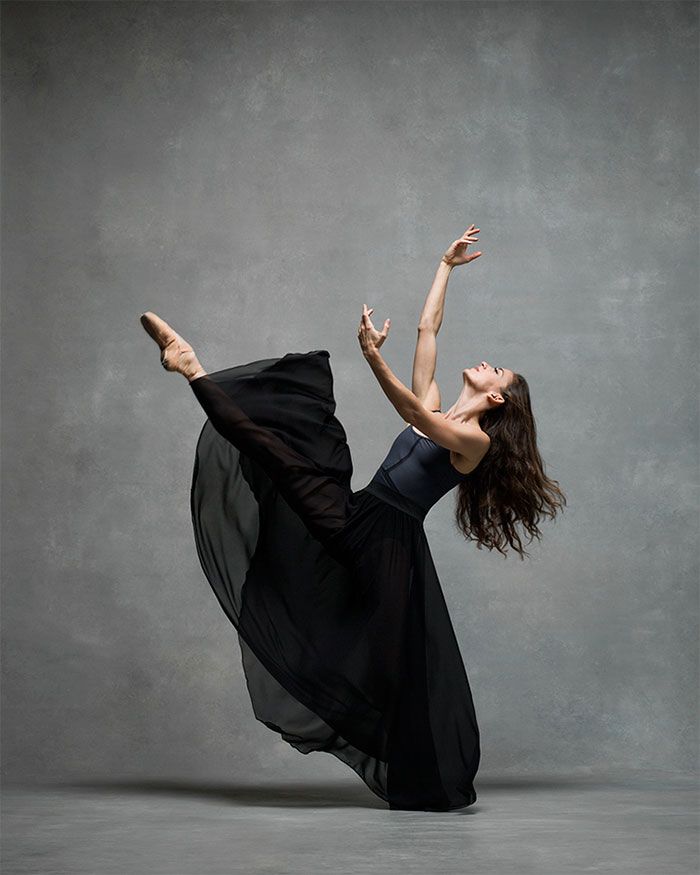 It also contains some elements of ballet. The main thing in this dance is not memorized movements or a certain style, but self-expression, individuality, freedom. If you want to learn a new hobby, like dancing, then you might like contemporary.
It also contains some elements of ballet. The main thing in this dance is not memorized movements or a certain style, but self-expression, individuality, freedom. If you want to learn a new hobby, like dancing, then you might like contemporary.
Philosophy of dance
If there are certain strict forms in classical dance, then contempo is complete freedom of expression .
It is believed that this is not just a dance, but rather an art, a philosophy that manifests itself in movement
These movements express everything that a person feels and experiences. This is not a form of narration, like, for example, a ballet that tells us this or that story, but a search for answers to questions, an attempt to understand oneself, one's body.
Contempo does not impose strict rules on the choice of music - it can be absolutely anything. Movements also alternate here: muscle tension and movements with complete relaxation, movements and an abrupt stop, rise and fall. The peculiarity of the dance is that many elements are performed on the floor. Because the dancers don't follow strict rules, they don't have a script, no two dances are the same. After all, at the core - personal experiences and emotions .
The peculiarity of the dance is that many elements are performed on the floor. Because the dancers don't follow strict rules, they don't have a script, no two dances are the same. After all, at the core - personal experiences and emotions .
Contemporary is a way to find peace of mind and harmony. Therefore, in a sense, it can be compared with yoga. Contempo helps a person to escape from everyday life, learn to feel his body, develop plasticity. The legendary Isadora Duncan , one of the founders of this style, believed that this dance helps a person to master his body, to express high feelings through movements. She was sure that this had a beneficial effect on the mind and soul of a person.
The absence of strict limits and rules helps dancers feel complete freedom and peace. But freedom and tranquility are what modern busy people, always in a hurry somewhere, tense, lack so much.
Performing contemporary, a person only needs to listen to music and improvise, expressing himself, removing the burden of unspoken emotions and experiences
Finally, like any other type of physical activity, this has a positive effect on human health, improves endurance, flexibility, plasticity.
History of occurrence
The direction originated around the sixties of the last century in European and American dance schools. It was an improvisation technique with elements of ballet, yoga and modern dance. The founders are Isadora Duncan, Rudolf von Laban, Marie Raber and Martha Graham.
Isadora Duncan played a big role in the development of the contempo. It was she who became the first to reject the canons of the classical dance school. She brought elements of ancient Greek plasticity and modern dance into classical dance. Her style has been called innovative. Someone criticized her for being too bold, but she was sure that the movement would only be beautiful when it was truthful and filled with true feelings. And the concept of "beauty of lines" she considered absurd. The famous dancer laid the foundation for a style in which the main thing was the ability to hear your inner voice, feel your body and express your emotions and feelings with it.
In the following decades and up to the present day, contemporary has developed, changed, new techniques have appeared. Today it has become one of the most popular dance styles in the world. Moreover, it is even studied in dance schools and universities.
How to learn to dance contemporary
Today, contemporary dance uses many figures and elements, including classical ballet movements. Therefore, beginners need to work on their flexibility and plasticity. And we are talking not only about the ability to sit on a twine - this is not necessary, but about the fact that you need to be able to work with your hands and feet correctly. Therefore, it is better to start learning by looking for a dance studio where you will be taught the very basics and will help develop flexibility. If you plan to participate in various competitions, events, master classes, then the more you need a dance school. If you study at home, then progress will be very slow.